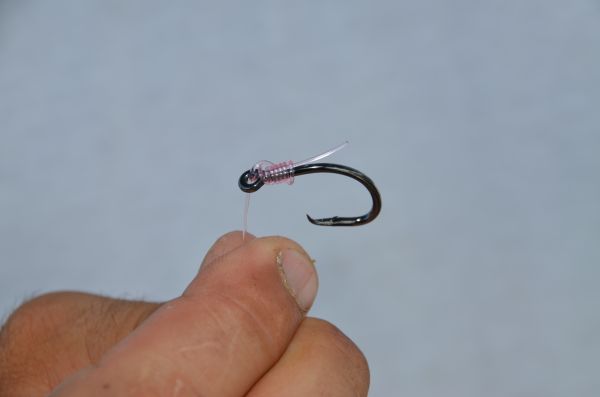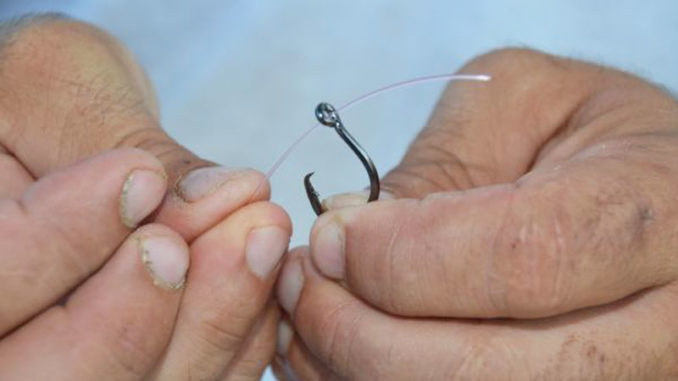
Capt. Kenny Heikamp uses 1/0 circle hooks, considered small by most fishermen. That’s because smaller hooks are harder for fish to see, he explained.
He also snells all his hooks rather than tying them on with knots.
“Snelling takes advantage of circle hook design angle to give more hook-ups,” he said.
Heikamp uses 4-foot-long, 50-pound-test leaders and is a big time believer in fluorocarbon.
“I won’t go fishing without it,” he said. “I want every advantage in my corner.”
The leader is attached to 65-pound PowerPro braided line.
“It’s tough, and you get a lot less main-line break-offs,” he said. “Plus it has no stretch. I already have too much stretch in the leader.”
His recommendations for reels are 500 or 600 series Shimano Tekotas for levelwinds and 8000 or 12000 Shimano Baitrunners for spinners. He uses the same rods for both styles of reels: extra, extra-heavy Shimano Trevalas rated for 200-pound-test braided line.
Here is how Heikamp snells a hook:
1.) Pass the end of the line through the eye from the point side to the back.
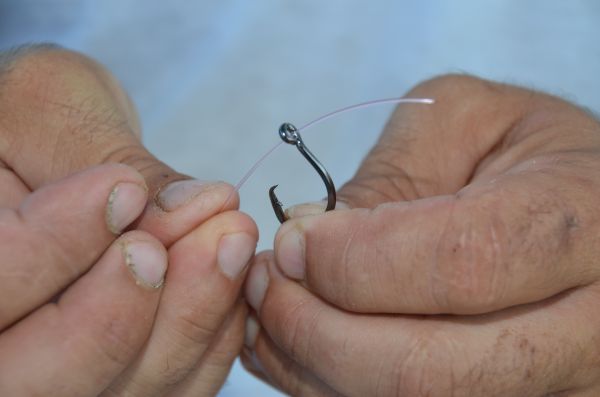 2.) Bend the lead end of the line downward and begin wrapping the long end of the line down the shank of the hook. Wrap five to seven times, with the wraps carefully placed side by side.
2.) Bend the lead end of the line downward and begin wrapping the long end of the line down the shank of the hook. Wrap five to seven times, with the wraps carefully placed side by side.
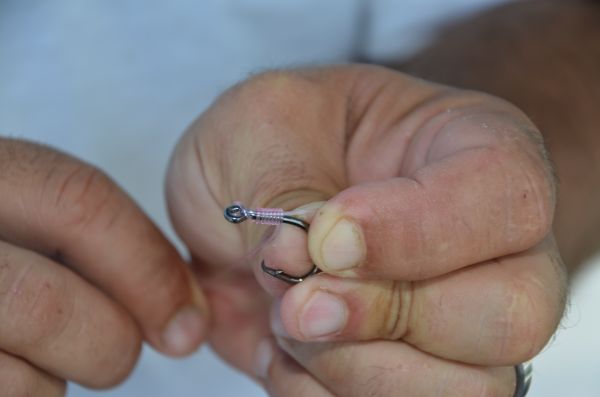 3.) Insert the long end of the leader through the hook’s eye from the back of the hook toward the point side.
3.) Insert the long end of the leader through the hook’s eye from the back of the hook toward the point side.
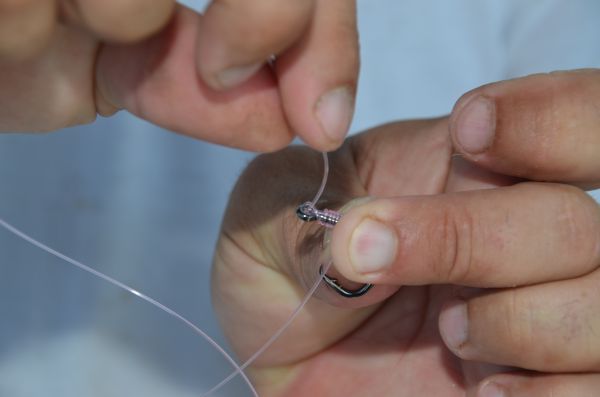 4.) Pull the snell tight. It might be easiest to hook the hook over an object to have something firm to pull against. Trimming the end of the line pointing downward on the hook is not necessary unless the line passes the bend of the hook.
4.) Pull the snell tight. It might be easiest to hook the hook over an object to have something firm to pull against. Trimming the end of the line pointing downward on the hook is not necessary unless the line passes the bend of the hook.
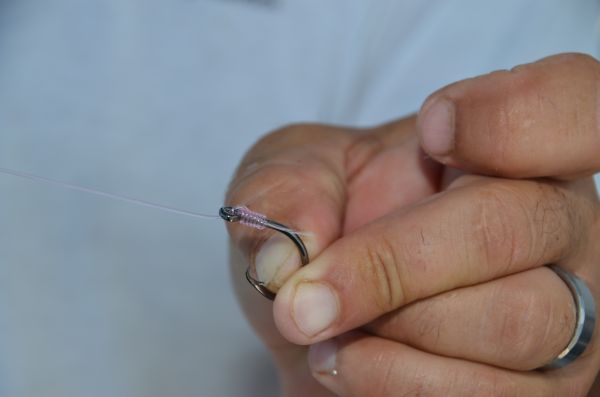 5.) A properly snelled hook forces the hook to curve against the line, increasing its fish-hooking efficiency.
5.) A properly snelled hook forces the hook to curve against the line, increasing its fish-hooking efficiency.
